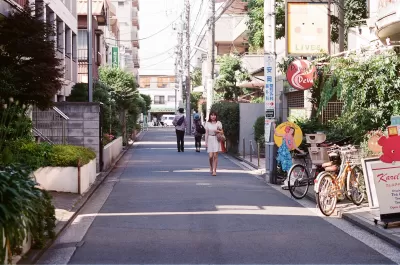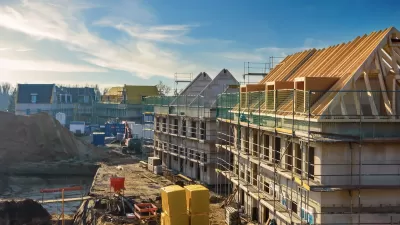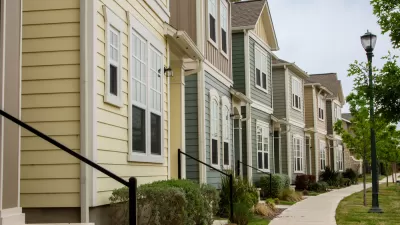Japan's system of zoning appears highly capable of fostering mixed-use, walkable neighborhoods. How does Japanese zoning differ from our own, and what factors caused those differences?

"Taken as a whole," Nolan Gray writes, "Japan's zoning system makes it easy to build walkable, mixed-use neighborhoods," making it markedly different from the prevailing American norm. "Japanese zoning is relatively liberal, with few bulk and density controls, limited use segregation, and no regulatory distinction between apartments and single-family homes."
What led to such a wide distinction between zoning in Japan and in the United States? Gray puts forward three main factors. For one thing, "the U.S. privileges real estate as an investment where Japan does not, incentivizing voters to prohibit new supply with restrictive zoning." Current law encourages homebuyers to treat their property as a way to "build wealth," standing in for a more robust social safety net. In Japan, however, homes have little resale value, fully depreciating in some cases after an average of only 22 years.
Second, Gray writes, "most public services in the U.S. are administered at the local level, driving local residents to use exclusionary zoning to 'preserve' public service quality," a process that exacerbates segregation by race and class. By contrast, Japan's local public services are standardized on the national level. The island nation compensates with high marginal tax rates and immigration policies that enforce racial homogeneity. "The desirability of the latter two policies is highly suspect, but the decoupling of public service quality from local municipal boundaries is a no brainer."
Finally, the U.S. practices "near-total deference" to local land use planning, normalizing the widespread use of discretionary permitting and magnifying the power of special interests. Japan uses an "as-of-right" system of permitting, "meaning that if a project complies with the zoning, it doesn't need to go through a discretionary review process."
"In this sense, Japanese zoning gets close to proper planning: policymakers consider upfront what type of development they would like to permit and where, and when developers come up with a conforming proposal, they hand over the needed permits."
FULL STORY: Why Is Japanese Zoning More Liberal Than US Zoning?

Planetizen Federal Action Tracker
A weekly monitor of how Trump’s orders and actions are impacting planners and planning in America.

Congressman Proposes Bill to Rename DC Metro “Trump Train”
The Make Autorail Great Again Act would withhold federal funding to the system until the Washington Metropolitan Area Transit Authority (WMATA), rebrands as the Washington Metropolitan Authority for Greater Access (WMAGA).

The Simple Legislative Tool Transforming Vacant Downtowns
In California, Michigan and Georgia, an easy win is bringing dollars — and delight — back to city centers.

The States Losing Rural Delivery Rooms at an Alarming Pace
In some states, as few as 9% of rural hospitals still deliver babies. As a result, rising pre-term births, no adequate pre-term care and harrowing close calls are a growing reality.

The Small South Asian Republic Going all in on EVs
Thanks to one simple policy change less than five years ago, 65% of new cars in this Himalayan country are now electric.

DC Backpedals on Bike Lane Protection, Swaps Barriers for Paint
Citing aesthetic concerns, the city is removing the concrete barriers and flexposts that once separated Arizona Avenue cyclists from motor vehicles.
Urban Design for Planners 1: Software Tools
This six-course series explores essential urban design concepts using open source software and equips planners with the tools they need to participate fully in the urban design process.
Planning for Universal Design
Learn the tools for implementing Universal Design in planning regulations.
Smith Gee Studio
City of Charlotte
City of Camden Redevelopment Agency
City of Astoria
Transportation Research & Education Center (TREC) at Portland State University
US High Speed Rail Association
City of Camden Redevelopment Agency
Municipality of Princeton (NJ)





























